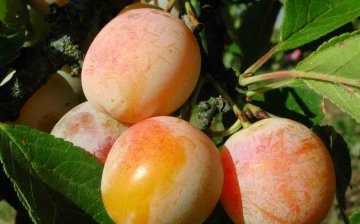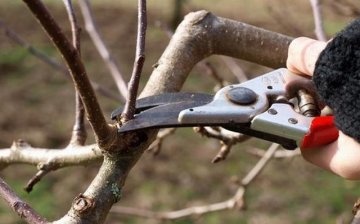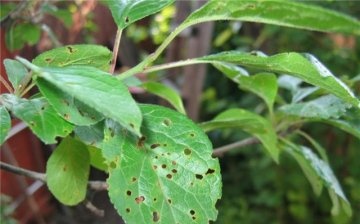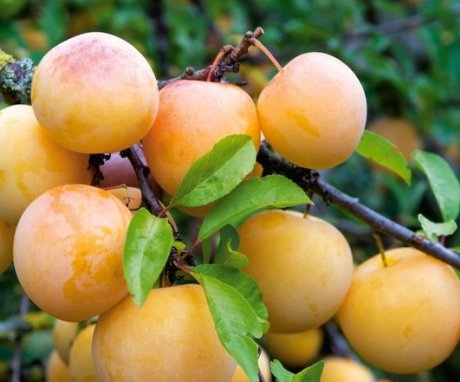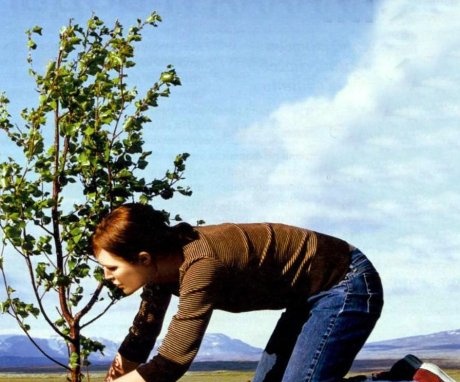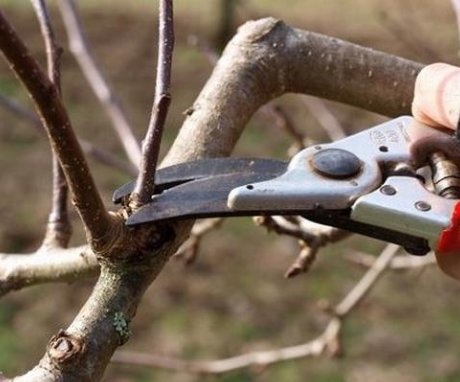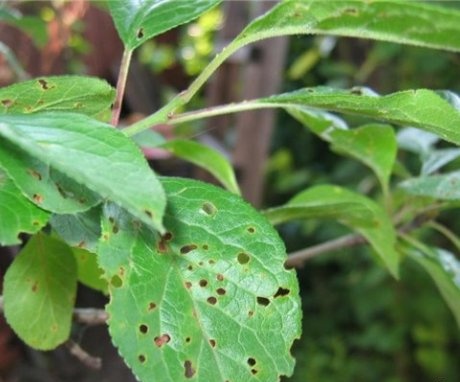Plum Yakhontovaya: description and growing rules
Plum "Yakhontovaya" is the result of the work of breeders from the All-Russian Institute of Selection and Technology of Horticulture and Nursery, the main experimental station of which is located in Moscow. Kh. V. Enikeev and SN Satarova worked on the breeding of this variety, who achieved positive results when crossing the varieties "Eurasia 21" and "Smolinka". New variety plum received the name "Yakhontovaya".
The flower buds of "Yakhontova" plum are practically not damaged by recurrent frosts, the tree easily tolerates droughts and is immune to common diseases and insect pests, which makes this variety especially valuable and popular among gardeners.
Content:
- Characteristic features of the "Yakhontova" plum
- Landing features
- Recommendations for plum care after planting
- Correct pruning is the key to a good harvest
- Diseases and pests
Characteristic features of the "Yakhontova" plum
Plum trees "Yakhontovaya" grow powerful and quite actively. Adult specimens grow up to 5.5 meters in height and have a neat, rounded crown, of medium thickening. But the height of the tree can be easily adjusted by vaccinations on dwarf rootstocks VVA-1, felt cherry and home plum "Alexy".
At the time of fruiting, trees enter from the third or fourth year of life and give bountiful harvests annually.
Annual growths, bouquet twigs and spur are strewn with bright fruits. The variety is not susceptible to damage by fruit rot and perforated spot (clasterosporium) and rarely gets sick with viral infections.
The yield of the variety is high - one tree is able to pamper the owner with 45-50 kilograms of delicious fruits. But for this "Yakhontova" needs good neighbors-pollinators, especially gardeners distinguish "Hungarian Moscow", "Skorospelka red" and "Memory of Timiryazev".
The fruits of the yacht plum are ready for harvesting by the end of August. By the time of maturity, they acquire a bright golden color with a speckled blush. Plums are rather large (25-35 grams), have a rounded-elongated shape and golden juicy pulp of a pleasant dessert sweet taste with a refreshing sourness, which is given by a thin skin.
Landing features
"Yakhontova" plum is easy to propagate by budding and grafting, and active development and fruiting directly depend on proper planting and competent subsequent care.
For planting activities, the early spring period is best suited, when the trees have not yet moved away from winter dormancy. Proper planting is the key to a healthy, developed tree. And for this you need to fulfill a number of conditions:
- Choose a place with abundant lighting and so that the groundwater level is no higher than one and a half meters to the surface.
- Dig a landing hole, which should be about a meter wide and half a meter deep. Pits should be prepared in advance, preferably several months before planting.
- Place the plum seedling vertically in the center of the hole and sprinkle the straightened roots with sod earth with the addition of mineral and organic fertilizers.
- When filling up a tree, the soil should be tamped in layers so that voids do not form in the root zone.
- You should not completely fill up the root collar, it should rise several centimeters above the soil surface.
- At the end of the procedure, make a periosteal circle and abundantly to water - 1-2 buckets of water are needed for one seedling.
- Mulch the soil around the trunk with peat or humus to retain moisture.
So that the seedling does not suffer from gusts of wind and downpours, it should be tied to a support, and it is better to do this from the north side.
Recommendations for plum care after planting
Caring for young trees consists in regular watering, weeding and loosening the soil.
- Irrigation. Plum does not tolerate waterlogging and drying out of the soil, therefore watering is required as needed, ensuring constant soil moisture. The optimal interval between watering is two to three weeks. In summer, 3-6 buckets of water are poured under one tree.
- As the trees grow, you need to regularly test the soil for acidity. Plums grow well with neutral reactions.
- Regular pruning to facilitate tree maintenance.
When growing plums, special attention is required crown formation and adherence to the feeding schedule. When fertilizing plums, a certain order will be required:
- in the year of planting, young trees do not need to be fed
- in the second year of life, it will be necessary to apply nitrogen fertilizers twice at the beginning and at the end of June
- in the third and subsequent years (from the entry into fertile age), four additional dressings are applied: nitrogen-containing mixtures - at the end of April, nitrophosphate - in June, potassium-phosphorus - in August and after harvest
To normalize the acidity of the soil, it is recommended to add slaked lime every 4-6 years. If the soil is prone to acidification, then lime should be applied as needed.
In the first years after disembarkation and in regions with severe winters, the Yakhontovaya plum needs shelter. To do this, it is enough to close the trunk with peat or fallen leaves. Snow can also prevent freezing and is a source of moisture in early spring. It is thrown in a small snowdrift into the near-stem circle.
Correct pruning is the key to a good harvest
Pruning "Yakhontova" plum begins with the formation of the crown. The tree is formed at the height of the stem at 27-40 cm, and 5-7 neat branches are left for the crown, which are shortened in the first few years, preventing the formation of forks and deviations from the correct direction of growth.
After full fruiting at the plum, the conductor should be cut over the upper lateral shoots.
The crown will take on the shape of a glass and is well illuminated by the sun's rays. Carrying out sanitary and thinning pruning is shown if necessary, damaged branches, shoots and shoots that grow towards the trunk and interfere with each other are completely removed.
Diseases and pests
"Yakhontova" can be sick with moniliosis (gray fruit rot) and clusterosporiosis, and there is also a risk of attack by plum aphids, black plum sawflies and plum moths. To prevent attacks of pests, before budding, you should dig up the soil of the near-stem circle, cut and burn injured branches. Before and after flowering spraying with special prophylactic preparations is recommended.
With the development of diseases, damaged shoots are removed, and when the foliage is dropped, the Bordeaux liquid diluted with water is heated in the garden, the destruction of the affected shoots, leaves, rotten and mummified fruits is carried out.
By adhering to the basic rules for planting and caring for the Yakhontova plum, you can achieve high-quality annual yields.
And thanks to the possibility of long-term storage and versatility of use, you can feast on healthy fruits until the next harvest. Also plum "Yakhontovaya" is suitable for growing for production purposes with subsequent sale.Due to the presentation and good taste, the fruits are always in demand among consumers.
More information can be found in the video:



